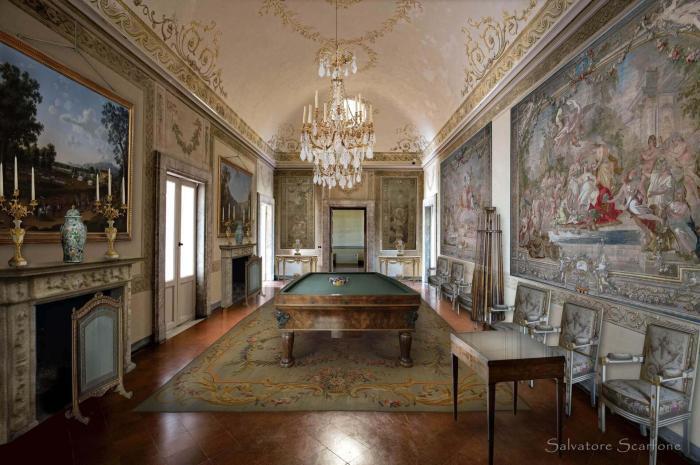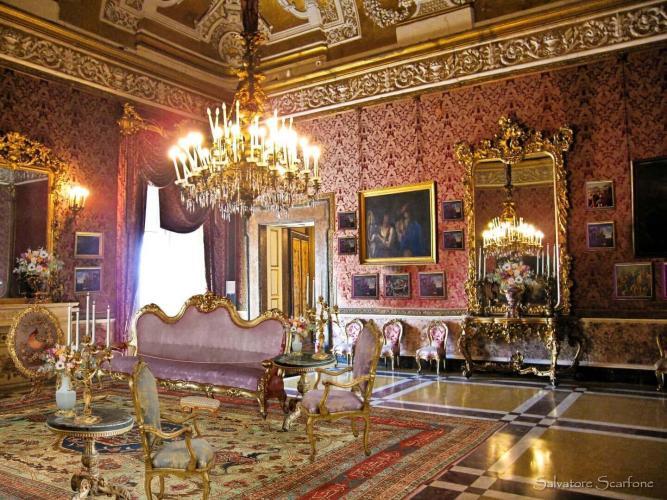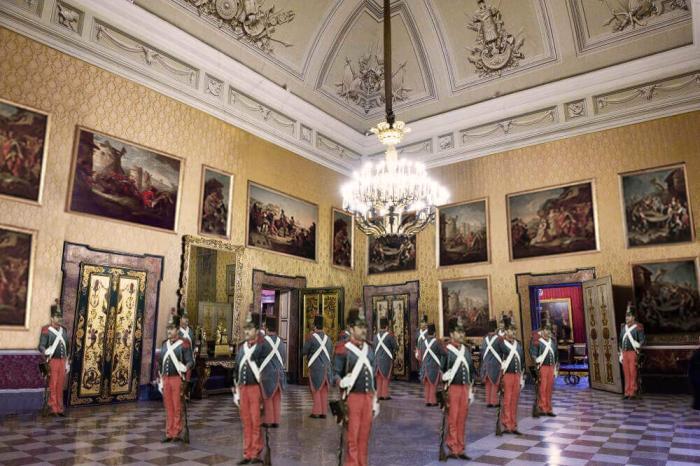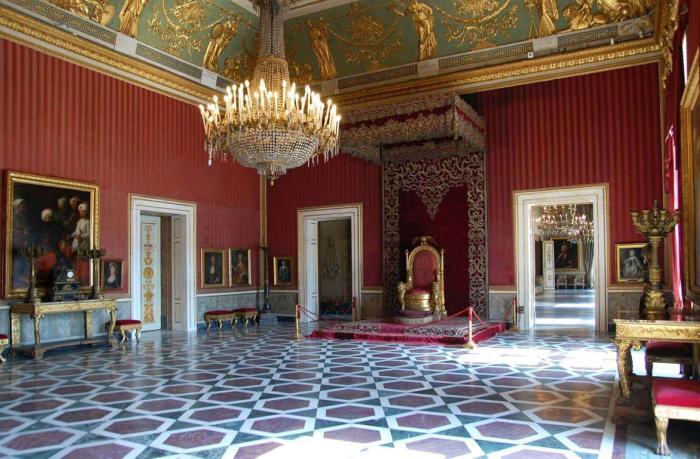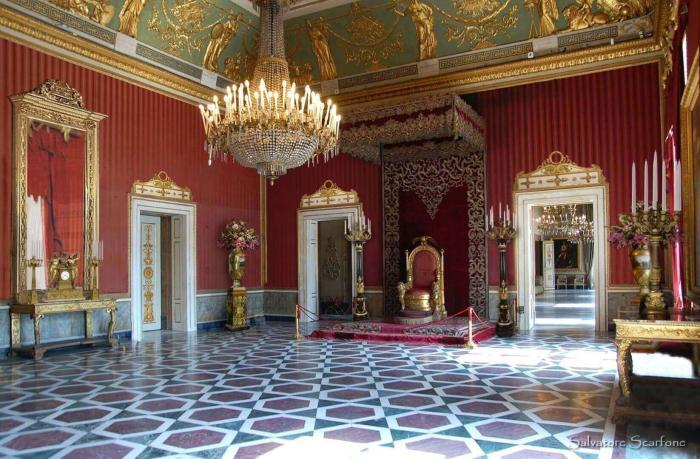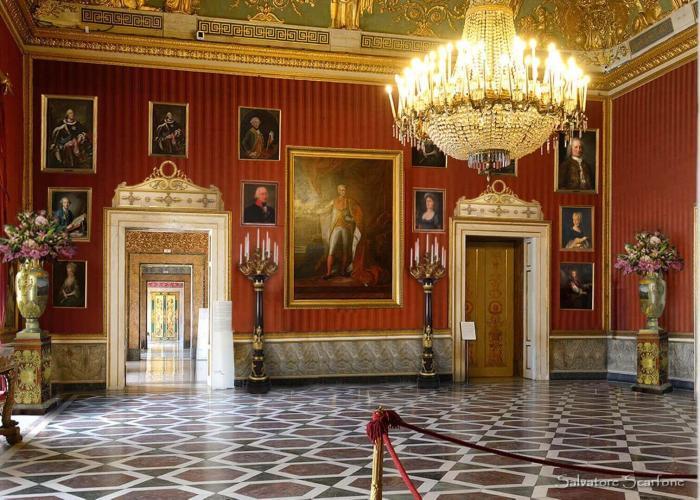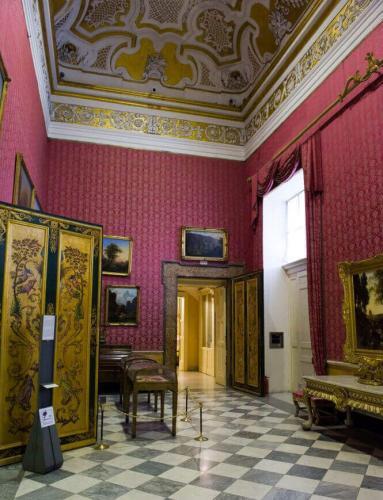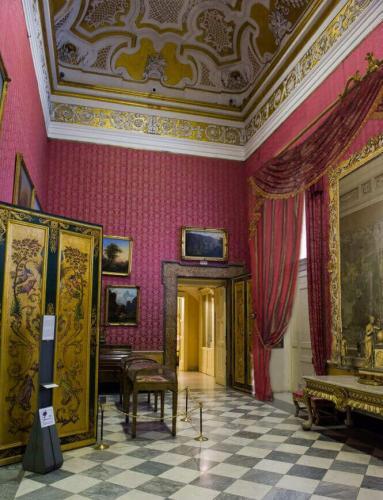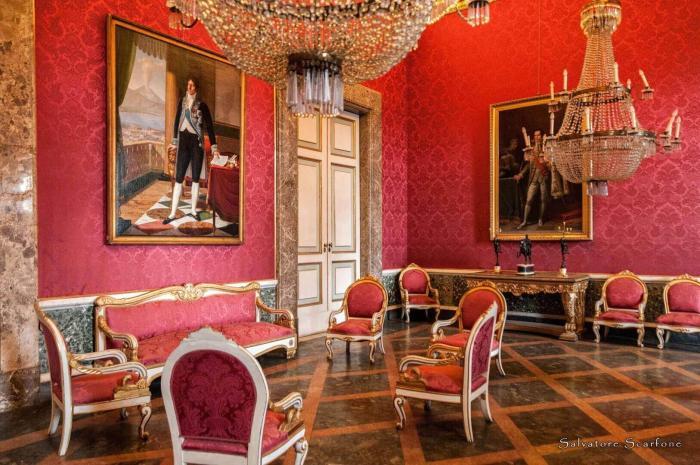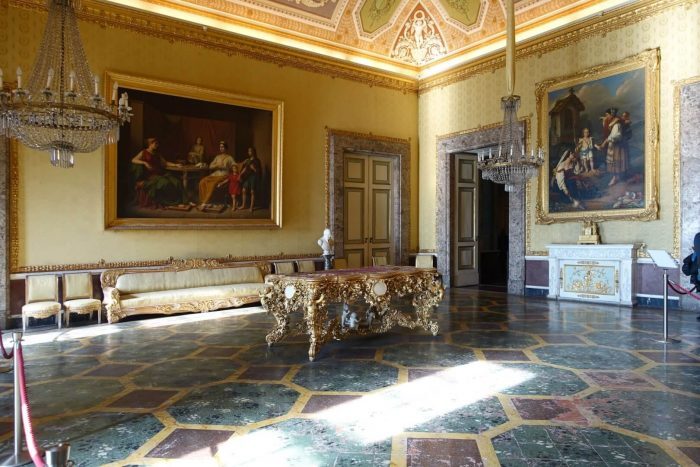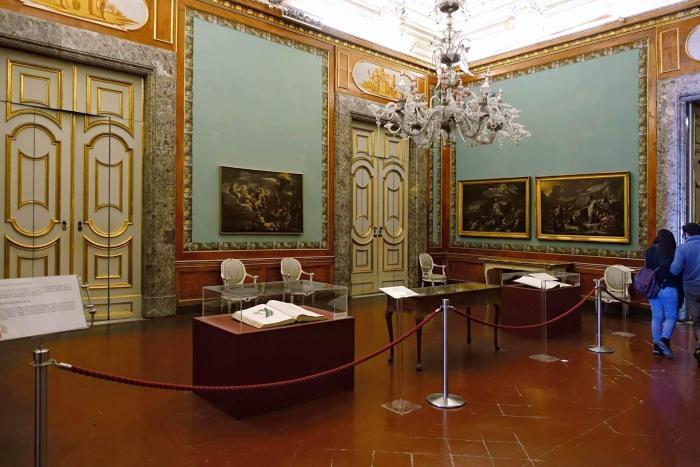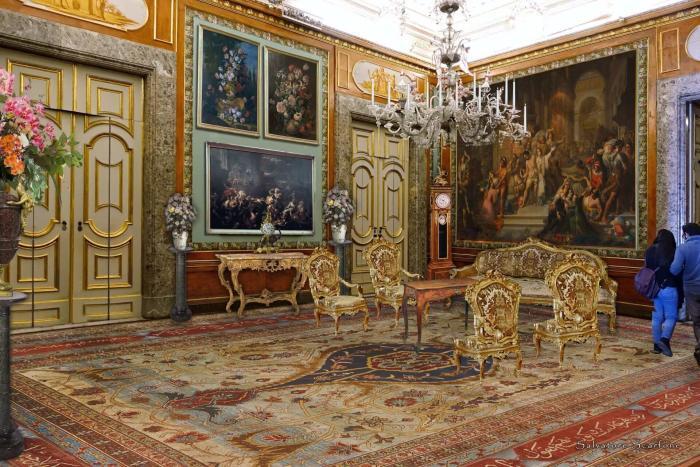Refurnishing of an ancient Palace
Back the time to the splendor of the 18th and 19th century
On this page you can view my virtual reconstructions of ancient vintage halls from the 1750-1860 era.
Before a refurnishings, usually should be carried out a study of court ceremonies and the historical inventories of the halls but, not being allowed to do this now, the reconstructions below want to only give an idea of the final result.
Royal Palace in Carditello
Over time the Royal Palace at Carditello was totally emptied of its furnishings, and damaged by vandals.
This is my hypothetical reconstruction of the Palace’s Gaming Room.
Being photomontages, the objects inserted could have distorted proportions.
Royal Palace in Naples
Queen's Formal Living Room
This formal living room has neo-rococo furnishings, so I completed it by adding elements of the same period (partly coming from other rooms of this palace) and other rococo ones. The eastern carpet was fashionable in the rococo, and the neoclassical frames were maintained because in ancient palace there are often different decorative styles stratified over time (the fireplace, for example, is in empire style).
Being photomontages, the objects inserted could have distorted proportions.
Guard Room
The Guard Room was designed to host Royal Guards and halberdiers.
I have rearranged it by removing all the chairs, replacing the tapestries on the walls with the pictorial cycle of the 38 paintings of Don Quixote stories, whose epic-chivalrous theme is, in my opinion, suitable for a guard room and, moreover, add a sense of regularity on the walls.
Being photomontages, the objects inserted could have distorted proportions.
Throne Room
The goal was to give greater solemnity to the throne room, by definition the center of the power of the sovereign, but not via reducing the importance the throne, nor giving a feeling of emptiness. For example, in my opinion, the walls currently appear a bit empty in the upper part. Therefore I proceeded:
- by adding bold and big furnishings from an adjacent room (mirrors and vases);
- removing all the chairs(only the king is sitting);
- restoring the Sarreguemines torcheres and placing them according to the dictates of the empire style;
- reinserting the original door decorations;
- positioning all the royal portraits on the wall opposite the throne as used in the past, to add greater impact and order.
Being photomontages, the objects inserted could have distorted proportions.
Restoring the curtains
The room is equipped with double windows doors, and has the peculiarity of having a unique tent pole for both and with central decorative element. Therefore I restored the correct shape of the curtain panel, ie a single tent covering both windows holders. At the center I placed a mirror.
Being photomontages, the objects inserted could have distorted proportions.
Royal Palace in Caserta
Murat's Antechamber
The name of this room is a generic definition, because it has never been the antechamber of Joachim Murat, but was created after the dismemberment of the collections in the Royal Palace of Portici in Naples. Therefore I didn’t furnish it as a real antechamber, but I kept the current appearance of a living room.
Being photomontages, the objects inserted could have distorted proportions.
Council Room
I rebuilt an hypothesis of a Council room by adding the missing meeting table. I also added a living room, a carpet and various functional furnishings and an adequate lighting, due to the lack of applique on the walls.
Being photomontages, the objects inserted could have distorted proportions.
Queen Maria Carolina's living room
What is currently indicated as “second reading room of the Palatina library”, at the time was actually the living room of the Queen. She loved the rococo style, therefore being a transition style room (the fireplace – not visible in the picture, is rococo and there are many floral decorations on walls and ceiling.), I created a reconstructive hypothesis by entering the rococo living room today in Montecitorio Palace in Rome, various paintings in the palace, etc.
Being photomontages, the objects inserted could have distorted proportions.

